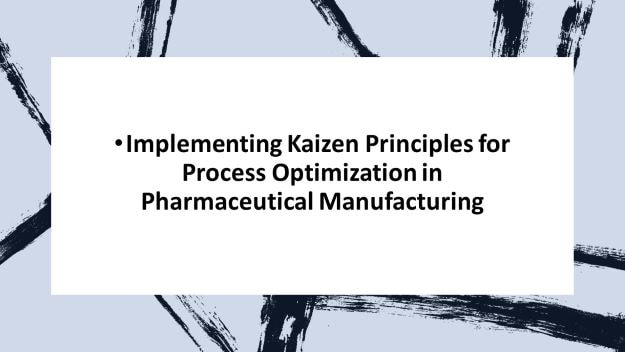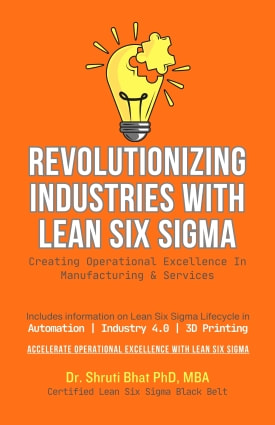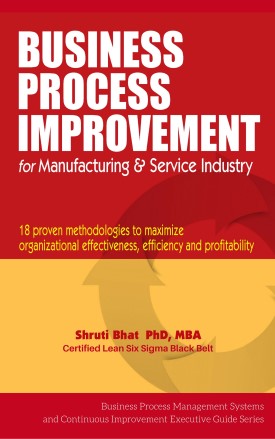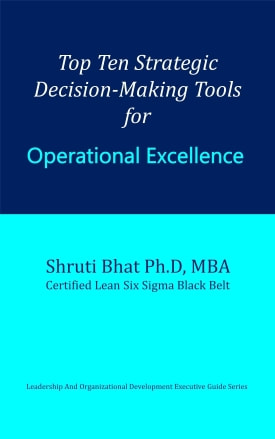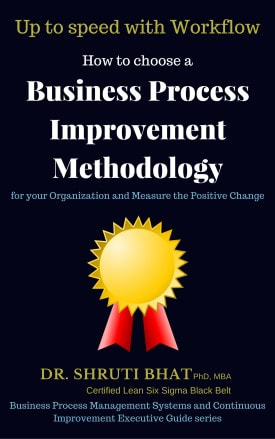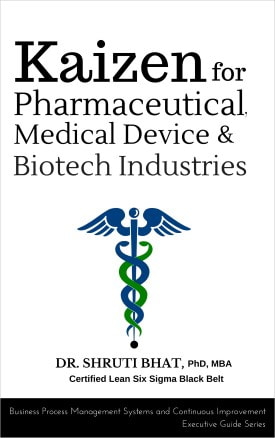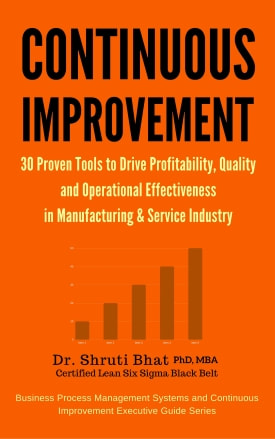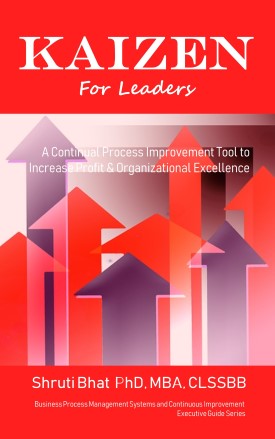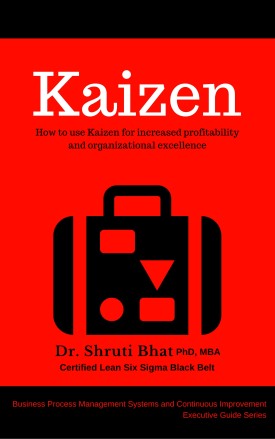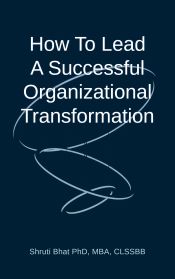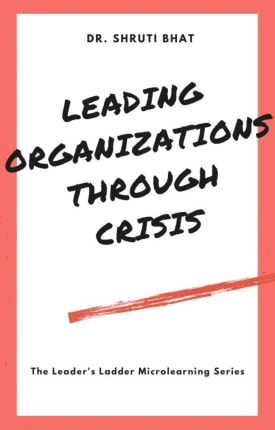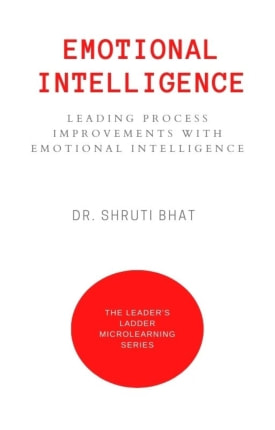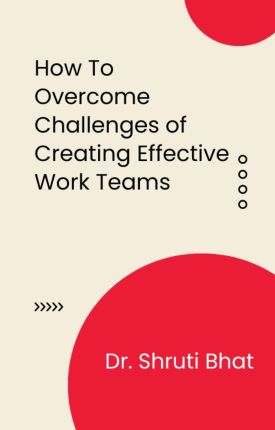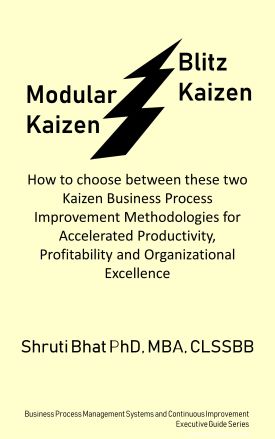Same is true with the global pharmaceutical industry as well. Traditionally, pharma companies have implemented Lean Six Sigma, ISO and TQM in their pursuit of operational excellence. Though these methodologies are great, they require significant input of time and money before results can be witnessed. Kaizen on the other hand, shows equally good or sometimes better results within significantly less time and budget. Hence, Kaizen is called the ‘shortcut to operational excellence’.
- Top ten strategic decision-making tools for operational excellence.
- Popular Continuous Improvement Tools.
- How to Choose a Business Process Improvement or Continuous Improvement project?
History of Kaizen-
Kaizen was developed in Japan and means ‘Make Better’. The concept of Kaizen was prevalent in Japan folklore for a long time. But it was introduced in the business sector after the second world war. Originally it was used in the auto industry, but since then, Kaizen has found widespread use in almost all industry sectors be it manufacturing, service, government organizations or educational institutions. Since, Kaizen needs minimal resources, it can be implemented in big and small organizations and even startups.
Implementing Kaizen principles in the pharmaceutical industry can be a game-changer. In this blog post, I shall touch upon how pharmaceutical manufacturing and business processes can be optimized by implementing Kaizen, consequently leading to increased efficiency, reduced waste, and higher-quality efficacious products.
Understanding Kaizen Principles-
Kaizen methodology is broadly founded on three pillars- people, processes, and profit- Collectively, it includes continual improvement, teamwork and consistent gemba walks in order to transform a business or bring about operational excellence within an organization.
- Continual improvement- This simply means that no process is ever perfect and that there is always room for improvement. Successful Kaizen-ing needs incremental process improvements done consistently. Now pharma manufacturing is highly regulated, and processes once set can’t be changed since product dossiers are approved by FDA to fetch marketing authorization. Yet, Kaizen can be implemented in pharma manufacturing while making sure approved dossier contents as well as SUPAC guidelines are complied with. Adapting Kaizen to pharma processes (both technical and business processes) brings-in a savings of as much as 40% year-on-year.
- Teamwork- Kaizen-ing requires a motivated and engaged workforce. To get best output from Kaizen implementation, teamwork is vital. In pharmaceutical manufacturing, this means that individuals from various departments i.e. a cross-functional team, must work together to identify areas of improvement thus creating a practice and culture of collaboration.
- Gemba walks- Gemba in Japanese means ‘the actual workplace’. Gemba walks in the pharma manufacturing sites must be conducted on a regular basis to identify improvement opportunities while ensuring cGMP is always complied with. I’ve a detailed blogpost on Gemba walks, check it out here.
Note that, Kaizen can be applied to traditional setups as well as Industry 4.0, but Kaizen must be customized for your workplace. That is, it is not a one-size-fits-all kind of technique that someone can apply by simply reading a book or watching a video. Yes, a book or video on Kaizen will certainly help you with commencing your Kaizen journey, but a Kaizen Expert leading your Kaizen initiative will deliver as much as 5x in terms of ROI. That is because- Accuracy in Kaizen strategy planning and deployment is the key to its success.
Applying Kaizen to Pharmaceutical Manufacturing
The ultimate goal of Kaizen-ing in pharma companies is to streamline processes and maximize value for the organization, healthcare professionals and primarily the patients. After touching upon the Kaizen principles, I shall now dive into how Kaizen methodology can be effectively applied to pharmaceutical manufacturing:
1. Reduce Waste and Improve Efficiency
One of the fundamental objectives of Kaizen is to identify waste and find ways to eliminate it. Waste can take various forms in the pharma industry, including time, resources, materials and non-compliance to cGMP. By applying Kaizen, we can identify and eliminate the non-value-added activities in the pharma manufacturing processes, thus bringing about a reduction in production cycle time, lower overheads and increased productivity.
2. Standardize Processes
For pharma products to comply with specifications, it is paramount that the manufacturing process output is consistent and reproducible. Applying Kaizen fosters process standardization and development of best practices in tune with cGMP mandates. And this process standardization eliminates deviations, variations, defects, rejects, rework and enhances product quality.
3. Streamline Changeover Procedures
Many a times pharma manufacturing facilities don’t have product-dedicated production areas. In such instances, multiple products or multiple strengths of the same product is produced in the facility. This requires frequent switches between the products based on their demand forecast/ planning. Such changeovers can be time-consuming and resource intensive. Applying Kaizen principles to pharma manufacturing processes help optimize changeover procedures, reducing downtime, enabling more efficient production and higher inventory turns.
4. Continuous Training and Skill Development
A lion’s share of Kaizen-ing success comes from the employees, especially the ones close to the process. Therefore, shopfloor employees must be appropriately trained for them to notice process operations minutely and offer suggestions for improvement. A well-trained workforce is better equipped to identify process improvements and adapt to changes. Therefore ‘Continuous Improvement’ necessitates ‘Continuous Training’ to ensure that employees have the necessary skills to perform their roles effectively.
Note that, alongside skill-training, organizations must foster a culture of transparency and trust, so employees feel free to voice their opinions and work in collaboration with everyone in the Kaizen taskforce. Note that, Kaizen training to employees must be provided as customized workshops for your workplace. Checkout some of the popular workshops on continuous improvement for manufacturing industry here.
5. Data-Driven Decision-Making
Pharmaceutical industry being regulated, data gather, and analysis is vital for its very survival. Implementing Kaizen fosters a culture of collecting data and data analytics to make informed decisions. Data-driven insights can help identify trends, bottlenecks, wastes and areas for improvement. Applying correct decision-making tools while building Kaizen strategy assures success with Kaizen and in-turn increases operational excellence. Checkout top ten strategic decision-making tools for operational excellence here.
6. Visual Management
So far, visual management has gained popularity within the service industry for example in aviation, tourism, hospitality, banking sectors etc. But now, its popularity has extended to manufacturing sector as well, because of the immense benefit it offers. Visual management is a natural part of Kaizen and pharma industry too stands to benefit from its implementation. There are numerous visual management tools and all of them are awesome and effective. But we must select the ones best suited to achieve our process improvement goals.
Implementing visual management techniques, such as Kanban boards, Andon lights, Flowcharts etc., make pharmaceutical manufacturing processes more transparent and lucid for all employees. This promotes better communication and smooth workflow, resulting in minimal errors and enhanced productivity. Do checkout my blogpost on how to increase process efficiency with visual management here.
7. Kaizen Events
Kaizen methodology is implemented via Kaizen Events. These events bring employees together to focus on identifying the areas of improvement and collectively work intensively to implement the proposed changes over a short period of time. It's an effective way to kickstart the Kaizen process and generate quick wins. Checkout how to conduct Kaizen Events in the pharmaceutical industry here.
Case Study: Kaizen in Action
Let me share my real-world example of Kaizen implementation to illustrate the impact of Kaizen process improvement in a pharmaceutical company. A multinational pharmaceutical company manufacturing oral solid dosage forms (tablets and capsules) decided to implement Kaizen principles in its production facility. I’ve refrained from mentioning company details here to honor the confidentiality agreement.
So, this client approached us to initiate Kaizen at their workplace. Since, they didn’t have a dedicated continuous improvement division, it was a challenging project for my team to set up everything from A to Z. After two months of strategic deployment and company-wide employee training, the organization was ready with its Kaizen taskforce, and we created a Kaizen roll-out roadmap.
The company identified several areas for improvement for example:
1. Product development:
Pharmaceutical research is complex inherently because you’re identifying new medicinal entities and then formulating them in doses which are safe and efficacious for therapies to patients. While innovator pharma companies have a sizable set of R&D challenges, generic manufacturers have their own list of product development pains. Further, the situation grows tough because pharma R&D processes are surrounded by patents and regulations.
And if you’re a global company, then your product must not only circumvent all applicable patents but also meet the regulatory requirements of each market you plan to earn revenue.
Therefore, pharmaceutical R&D is expensive. To get maximum ROI, R&D processes (both technical and business processes) must be streamlined, be patient-centric and be tech-savvy. This requires continuous update and continuous improvement which in-turn require big bucks.
By applying Kaizen to their pharma R&D processes, the company saved as much as 40% of cost!
Tip: Kaizen blends-in with cGMP, ICH, QbD, PAT, automation, robotics, and traditional & novel drug delivery technologies to deliver quality products consistently…
2. Cleaning and Changeover:
Changeovers between different tablet formulations were taking longer than necessary. The Kaizen taskforce involved cross-functional teams in the changeover process and streamlined the cleaning and setup procedures. This improved the overall equipment efficiency (OEE) significantly.
3. Process optimization: The Kaizen taskforce worked upon improving Takt time of each process/ operation. This not only made huge savings in overhead expenses but also curbed wastes. The company significantly reduced downtime and increased overall manufacturing efficiency by 5-20% year-on-year.
4. Material Handling: Material handling processes were causing excessive waste and inefficiency. By implementing a just-in-time (JIT) inventory system and optimizing material flow, the company reduced waste, lowered costs, and improved overall production as well as supply chain efficiency.
Results:
By implementing these Kaizen-driven improvements, the pharmaceutical company saw several tangible results:
- Increased employee engagement and collaborative working.
- Decreased production time and increased throughput.
- Assured compliance to cGMP guidelines. Passed all regulatory audits in first go.
- Improved product quality and consistency.
- Lowered operational costs due to reduced waste, deviations, and downtime.
- Increased sales.
- Increased profitability and earnings per share.
To-Dos: The company will be applying Kaizen methodology to its sales and marketing processes with the objective of improving their topline and earnings per share. They will also be applying Kaizen to their clinical research program with the objective of achieving faster outcomes, quality data and lowered costs. These campaigns shall potentially increase the company’s profit by 10-20% year-on-year.
Conclusion
Implementing Kaizen principles for process optimization in pharmaceutical manufacturing is a journey that requires commitment, teamwork, and continuous effort. However, the benefits are well-worth the investment. By focusing on continual improvement, waste reduction, standardization, and employee engagement, pharmaceutical companies can achieve greater operating efficiency, higher product quality, and a competitive edge within the sector.
Kaizen's principles align with the pharmaceutical industry's commitment to providing safe, efficacious, cost- effective and patient-centric medications while striving for innovation and operational excellence. Learn more about how Kaizen can help your company here.
An important point to note is that Kaizen is a top-down methodology, so it starts at the top of the management ladder. Company leaders must believe in the Kaizen philosophy and visualize ways to use Kaizen to improve their business. Next this vision and Kaizen mission must percolate down in the organization so that employees are excited to participate in the Kaizen campaign. Do you know, a highly motivated Kaizen workforce can bring about big process improvements in as less as 7 days!
If you're looking to install strategic Kaizen process improvement initiatives at your workplace, let's talk...
About the Author: Dr. Shruti Bhat PhD (Tech), MBA, CLSSBB
Dr. Shruti Bhat is an award-winning Global Leader in Operational Excellence and Continuous Improvement, Best-Selling Author and Speaker. She is popularly known as 'The Profitability Expert'.
Shruti drives Kaizen, Lean Six Sigma, TQM, Kanban, Agile, Six Sigma, Just-in-time installations at client sites globally. She leads operational improvement, value stream transformation & cost-reduction initiatives at both manufacturing as well as service organizations. In addition, Shruti has exceptional proficiency with improving R&D productivity. More about Shruti here.
Shruti is the author of the book Kaizen for Pharmaceutical, Medical Device and Biotech Industries. Checkout the book here.
Related Reading:
- How to cut costs strategically using Kaizen
- Streamline processes and workflows with Gemba Walk.
- Top Ten Strategic Decision-Making Tools for Operational Excellence
- Popular Continuous Improvement Workshops & Webinars for Manufacturing Industries
- Mistake-Proofing Pharmaceutical Product Development, Manufacturing and Logistics, Cost Savings via Poka Yoke
- Popular Continuous Improvement Tools.
Follow Shruti on Twitter, Facebook, YouTube, LinkedIn
Categories: Kaizen | Operations | Life Sciences
Keywords and Tags:
#DrShrutiBhat #KaizenInPharma #PharmaceuticalIndustry #LifeSciencesIndustry #ProcessImprovement #KaizenInManufacturing #JustInTime #Lean #LeanManufacturing #ProcessExcellence #ContinuousImprovement #QualityImprovement #KaizenLeaderMasterclass #Speaker #KaizenTrainingAcademy

